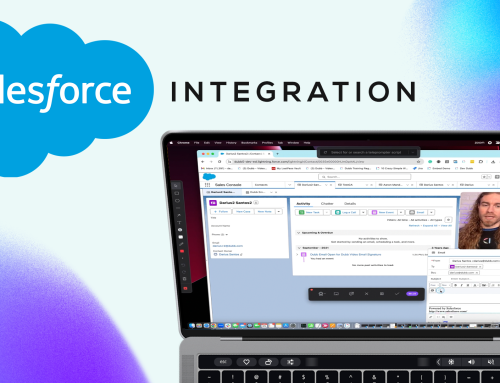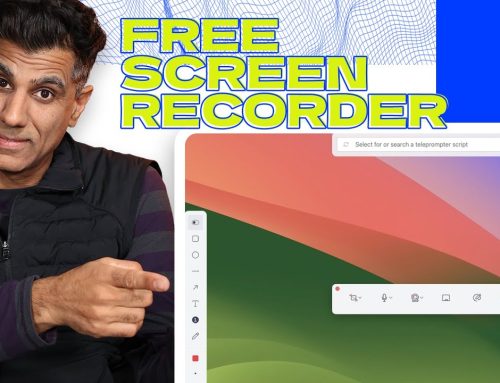You’ve worked hard to create what you think is the strongest possible video content for your company’s marketing strategy.
You have tutorials on how to use products, customer testimonials, and you’ve even worked with a few influencers to rake in the viewers.
The only problem?
These videos still don’t seem to be doing much to increase your conversion rates. You’re not getting the numbers of views and shares you anticipated, either.
It’s time for a change — and a quick one.
In this post, we’ll tell you everything you need to know about how to improve your video conversion rate optimization strategy.
Then, we’ll fill you in on how you can make video marketing work to grow your customer base, bring in the profits, and increase your brand recognition as a whole.
1. Start With a Bang
If your video hasn’t completely engaged your viewers within the first 30 seconds?
About 33% of them will click away from the video and your site.
This means you need to find a way to engage your viewers right away. One of the best ways to make that happen? By addressing your consumers directly and establishing empathy and trust.
Begin your videos by having the actor look straight into the camera, at the viewer, when possible. This way, the viewer will feel like the actor (or whoever you decide to feature in the video) is speaking directly to them.
Then, address the specific pain points your target market most often faces, or the way in which your company is radically different from your competitors.
For example, let’s say you’re an ethically-sourced coffee subscription service.
You could start your video by featuring one of your coffee farmers looking into the camera and saying something like, “Wondering where your coffee really comes from?”
Or, you could have your company’s founder start with something like, “None of us can get out the door without our morning cup of coffee. But have you ever stopped to think about the people who make the coffee beans you rely on to power through your big meeting or to get your kids to school on time?”
We promise viewers will want to keep watching.
2. SEO Optimization is Everything
You likely already rely on SEO optimization to help with improving conversion rates when it comes to your written content.
So, why aren’t you doing the same thing when it comes to your video content?
SEO for video is just as important as it is for written content. After all, YouTube is the second-largest search engine in the world. You need to find a way to get your video content in front of the people who are already searching for what you have to offer, and are therefore much more likely to convert.
How can you make that happen?
First of all, by including keywords in your video description and title.
Yes, only the first 157 characters in your YouTube video description will show up above the fold. However, you actually have a 1,000 character limit for video descriptions. Use the space you have to include keywords and give viewers more information about your company.
You should also include links to your website in your video description.
Finally, make sure you tag your video according to topic, industry, and even type of video. Make sure you also tag your company’s name to keep your branding consistent and to make it easy for your market to find your other videos.
For best results, include no more than 10-12 tags.
3. Choose the Right Thumbnail Image
Another “small but mighty” aspect of video optimization you need to consider?
Your video’s thumbnail image.
After all, this image is what entices viewers to click on the video in the first place and to choose it as opposed to the other videos that come up in their search engine results.
According to Google, the best thumbnail image size is 1280 x 720 pixels. Also, ensure that your thumbnail is under 2MB in size and that it’s in. JPG, PNG, GIF, or.BMP formats.
Now that you have the technical stuff out of the way, you also need to think about creating the most engaging image possible.
We strongly suggest that you include the title of the video in the thumbnail image, along with a single image. You want to keep things minimal and informative — avoid overcrowding.
Ensure that your thumbnail image’s font and central image are large enough to be easily read in the search results. If possible, your video’s central image should be a smiling person.
Why?
Because this may be able to increase your video conversion rates by as much as 10%. That’s because a calm, smiling face puts consumers at ease and helps to establish a sense of trust and transparency between your brand and your target market.
4. Know-How Your Market Watches Online Video
Video conversion optimization isn’t just about creating engaging content and having attention-getting thumbnail images.
It’s also about understanding how your target market watches videos online. Now is the time to harness the power of Google Analytics.
Analytics can give you all kinds of insight into how your market behaves online, from their geographic location to the average length of time they spent on your website.
But perhaps the most valuable piece of data when it comes to video marketing is information on the kind of computer operating system, devices, and even Internet browsers your consumers use.
You could make the greatest and most informative video in the world, but if your market can’t even watch it on their computers, it’s all for nothing.
This data allows you to ensure that your video content is compatible with and optimized for the ways in which your target market watches video online.
5. Consider Video Length
One of the most important strategies when it comes to video conversion rate optimization?
Make sure that you keep the majority of your videos short and sweet.
Of course, some videos need to be on the longer side — and there are consumers out there that would happily spend 10 minutes watching a video from a brand they like. Still, these people are in the minority.
Most experts agree that keeping your videos at the “two minutes and under” mark helps to increase your view count and your overall video conversion rates.
Interestingly, the exact ideal length for your videos varies according to video type.
Try keeping any tutorial videos within the 45-90 second rage. If you’re shooting a standard digital video commercial, aim for between 15-60 seconds. Testimonials and crowdfunding videos can be longer, right around the two-minute mark.
6. Proper Placement is Key
Remember that your video content doesn’t — and shouldn’t — exist solely on video platforms like YouTube and Vimeo alone.
Today’s consumers would much rather watch a video about a product or a service than read a blog post or text-based product page about it. This means that, in order to improve your conversion rates, you need to embed video content on your website.
The key here is to make sure you’re putting it in the right places.
One of the best places for video content is on individual product or service pages. You should include static images on these pages, but often, consumers want more information than a photograph alone can provide.
Your video content on these pages should include visual proof of results whenever possible. It should also include instructions on how to use the product if necessary, or how to book a service.
Video testimonials and tutorials are both excellent forms of content to include on these pages.
7. Stick to One Goal and One Subject
Many companies get so excited by all of the things that video marketing can do for their brand, that they make the mistake of expecting one video to be able to “do it all.”
For example, let’s say you’re a local cosmetic surgeon.
You want to create a piece of video content that talks about all the procedures you offer at your practice, your educational credentials, your experience as a surgeon, shows before and after photos, encourage people to sign up for your email list, follow your practice on social media, and book a consultation.
Slow down.
This amount of options is going to confuse and overwhelm your consumer and cause viewers to click away from your video in milliseconds.
It also, especially if you’re sticking to the “two minutes and under” mark, won’t really give you much time to tell your viewers about each subject.
So, what would a better video be?
Focus on a brief explanation of just one cosmetic surgery procedure you offer, like liposuction. Talk about what it is, how your liposuction methods are different from your competitors and show a before and after picture.
Then, include a link to your website page where consumers can learn more about the procedure and book a consultation.
You’ll see much better results if you use this method.
8. Engage in the Comments Section
Social media provides an excellent opportunity for you to connect directly to your consumers and speak to them in the comments section.
So why aren’t you taking advantage of that same level of interaction when it comes to your video content? The truth is that even negative comments and video “dislikes” can help you to improve your marketing strategy in the future.
If an overwhelming number of people seem to dislike your video, comb through the comments section, and try to find out why.
If your video received positive reviews, make sure you thank the users who left glowing comments. This is an excellent and cost-effective way to make your customers feel valued — and to increase their loyalty to your brand.
Remember too, that many people view the comments section as a customer service opportunity. It’s important to regularly comb through the video comments to see if viewers have any questions for your brand. They may even inquire about specific shipments or products.
You can set up automatic replies that direct them to your website, or you can address the issue directly and transparently in the comments section.
9. Don’t Forget Your Call to Action
The last step in improving your video conversion rate is perhaps the most important. It’s also, unfortunately, one of the most overlooked.
You need to make sure you include a clickable “call to action” in the video that directs users to a specific page of your website.
If you forget to do this, then you just won’t see much of a change in your conversion rates. Sure, some viewers might click on your website’s link in your video description — but far more will click a link in the video directly.
You could include a clickable button that goes to the product page of the item the video describes, a sign-up page for an account, or even links to your social media accounts.
Stronger Video Conversion Rate Optimization Is Possible
We hope that this post has helped you to realize that video conversion rate optimization isn’t as difficult — or even as time-consuming — as it might initially seem.
Instead, it’s all about taking the time to get to know your market, the kinds of ads they respond to, and even the way in which they watch videos online. You also need to make sure your video content is SEO-friendly, short and simple, the right length, and contains a clear call to action.
Are you ready to see how video content marketing can increase your conversion ratio, bring you loyal customers, and give you the profits you’ve always dreamed of?
If so, then we invite you to sign up for a free account with us at Dubb.
We can’t wait to help your business grow — and better serve your customers as a result.





Leave A Comment